
Figure 1 - Screen rolling tool
Replacing a window screen in an aluminum frame is a relatively easy project. However it does require one special hand tool - a screen rolling tool, as shown in Figure 1. The screen rolling tool consists of two wheels. One is used to seat the screen into the "U" channel in the aluminum window frame and the other is used to push the spline into position.
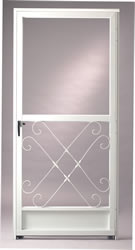
Figure 2 - Aluminum screen door
To replace the current window screen you must first remove the old screen.
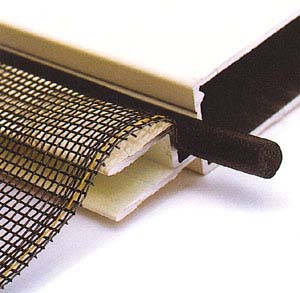
Figure 3 - Spline and screen fabric in window frame
The edges of the window screen are held in a "U" shaped channel by means of a vinyl spline, as shown in Figure 3. Find the end of the spline and use the tip of a screwdriver to pry the spline out of the "U" grove.
Pull the spline free from the window or door frame "U" grove and remove the damaged window screening.
If the vinyl spline appears to be in good condition it can be reused with the new screening. If you are in doubt, replace the spline, it is inexpensive.
Aluminum windows and doors can use aluminum or fiberglass screening. Fiberglass is a little easier to work with than the aluminum, however the aluminum gives a cleaner fit. It should be noted that fiberglass screening has a tendency to stretch after installation which may create sagging of the screening material. The installation is identical for both materials.
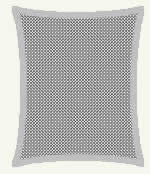
Figure 4 - Bowed aluminum window screen frame
A word of caution:
Aluminum frames, for window and door screens, have little shape integrity and because of this, it is very easy to bow the frame inward, as shown in Figure 4, and/or take the widow or door frame out of square when installing the screening into the frame. The larger the screen door or window, the more likely you will encounter this problem.
If you are encountering this problem, consider building one of the simple jigs shown in Figures 5 and 6, to hold the widow or door frame square and in position while you install the screening material.
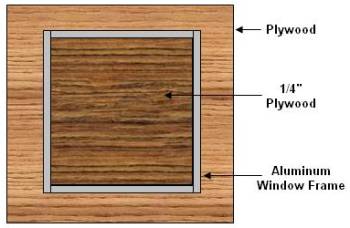
Figure 5 - Window or door screen replacement jig 1.
Temporarily mount a 1/4 inch piece of plywood, cut to the inside dimensions (measured at the corners) of the aluminum window or door screen frame, to another piece of plywood or work bench.
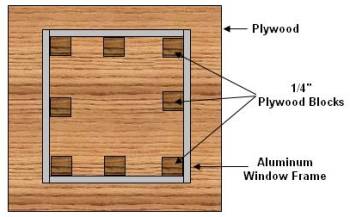
Figure 6 - Window or door screen replacement jig 2.
Temporarily mount a number of 1/4 inch plywood blocks to the inside dimensions (measured at the corners) of the aluminum window or door screen frame, to another piece of plywood or work bench.
Either one of the aforementioned jigs will ensure that the window frame stays square and does not bow during the installation of the window screen.
Cut the replacement window screen at least 2 inches bigger than the window frame in both the horizontal and vertical directions.
Lay the window screen over the frame, with an equal amount of excess material on all sides of the frame.
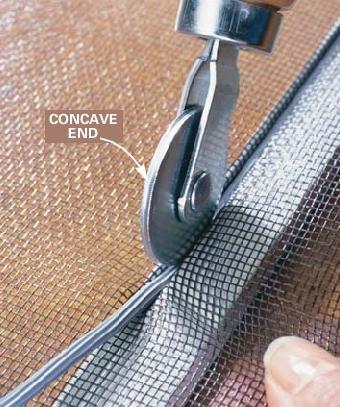
Figure 7 - Installing spline in an aluminum window frame
Using the roller on the screen tool, run it over the screen above the "U" shaped channel in the aluminum frame on one side of the frame. Try to keep a line in the screen straight with the edge of the aluminum frame, as this will make for a more ascetically pleasing finished project.
Insert the vinyl spline (cut the spline approximately 5 inches longer than required for the perimeter of the frame) and using the other end (concave end) of the screen rolling tool push the vinyl spline into position, as shown in Figure 7.
Repeat the process on the adjacent channel and continue until all 4 sides have been done.
Note: It will be necessary to use the blade of a slot screwdriver to push the screen and the spline into the corners of the aluminum frame as the screen rolling tool being round will not get into the corners. Be very careful when pushing the screen and the spline into position as it is very easy to poke a hole in the screening material.
Using a utility or razor blade knife, trim the excess screening material from the frame. Make sure that you trim the outside edge of the material.
